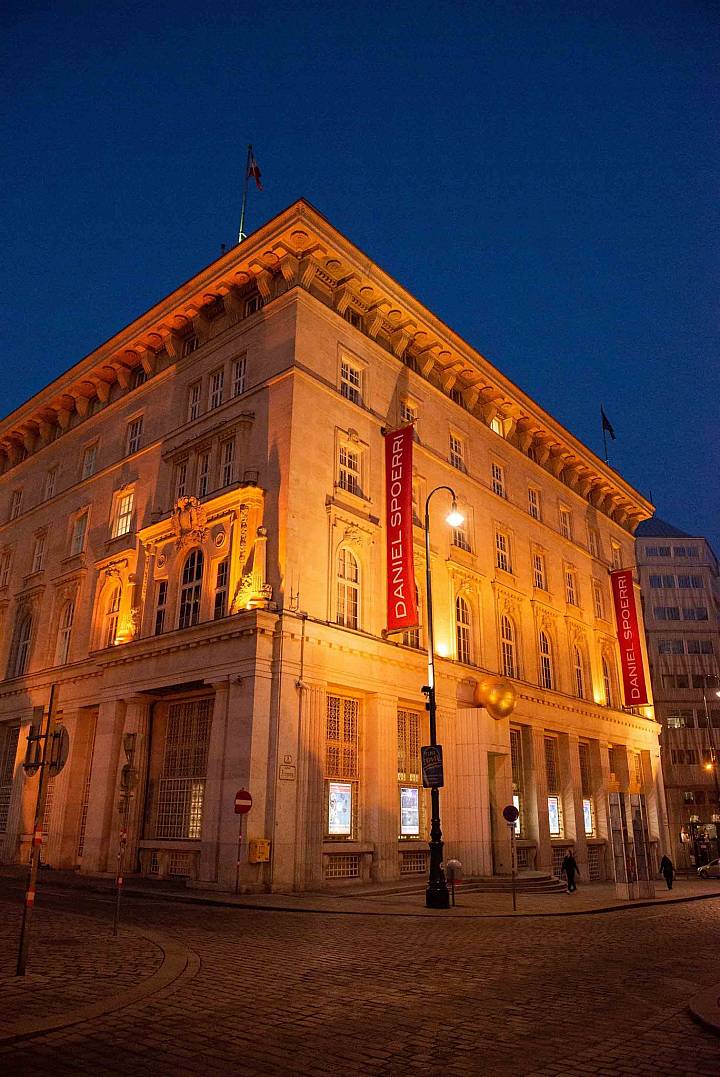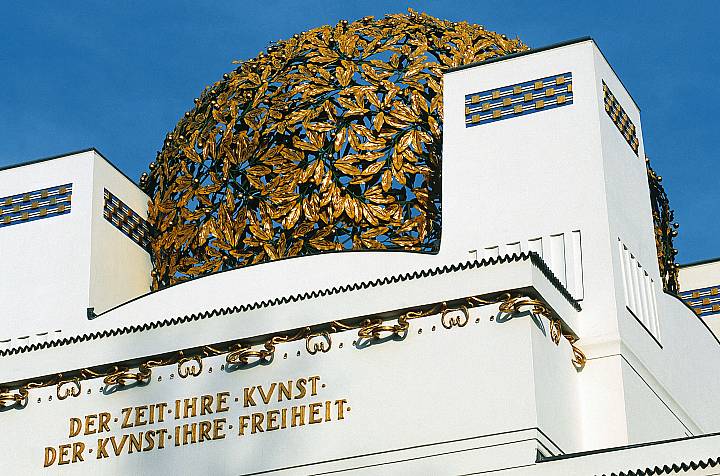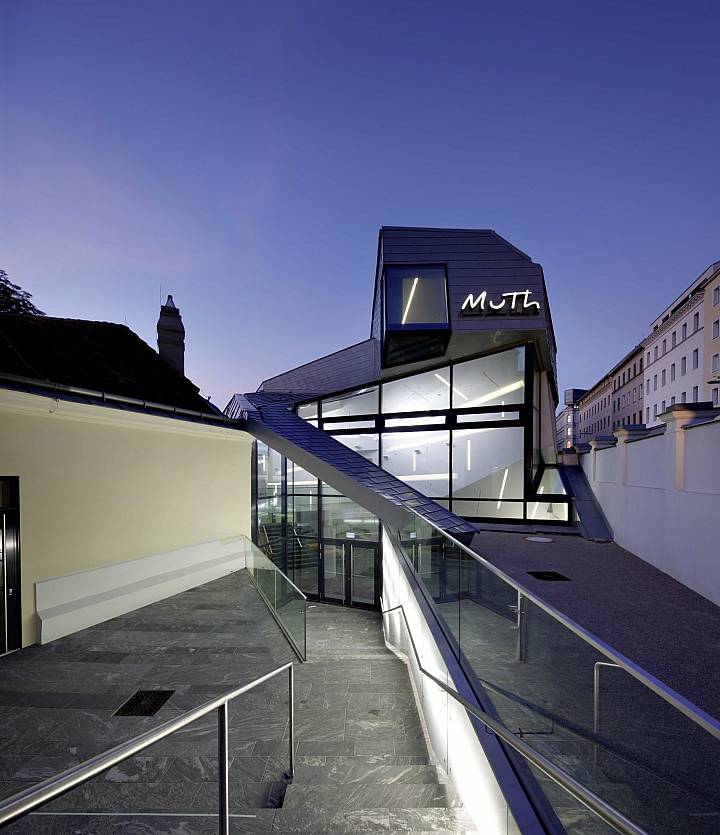Culture Guide
Dear Guests,
A very warm welcome to Vienna! This beautiful city, my hometown, is worldwide renowned for its wide range of cultural offers. I would like to let you know some of my personal favorites. Not only the well known places in the city center, but also some special locations off the beaten track can be found among my tips.
I wish you, dear culture tourists, a wonderful stay with lots of special moments and hope to enspire you to go exploring – your concierge is on hand to help you reserve tickets.
Enjoy your stay, get to know more of what Vienna has to offer!
Barbara Ludwig
Your advantages of direct booking: Free drink in our lobby bar. Valid per person in the room. If you come back frequently, we will be happy to provide you with your personal loyalty card.
Beethoven's Salon Concerts
Next concert dates are:
Sun, 23 June 5 pm
Sun, 30 June 5 pm
Sun, 7 July 5 pm
Sun, 14 July 5 pm
Sun, 21 July 5 pm
Sun, 28 July 5 pm
Sun, 4 August 5 pm
Sun, 11 August 5 pm
Sun, 18 August 5 pm
Sun, 28 August 5 pm
Vienna and music are inseparable, we at the Beethoven want to honor this traditional connection.
Therefore on weekends we organize concerts, performed by the wonderful artists Michael Babytsch at the cello and Pavlo Kachnov at our Bösendorfer grand piano, inherited by Barbara Ludwig from her mother Sissy, herself a gifted pianist. The musicians present a beautiful selection of chamber music by the classic Viennese composers like Mozart, Haydn, and of course, Ludwig van Beethoven. Enjoy the music in our Papageno lounge overlooking the former main entrance to Theater an der Wien.
During the intermission we will serve a complimentary glass of Szigeti sparkling wine. House guests are welcome, guests from outside will be charged EUR 18,00.
Please reserve your tickets online or by sending an email to concert@hotelbeethoven.at.
Albertina modern
Vienna has a new museum for modern and contemporary art. And what a museum it is! The Albertina modern, an annex of the world-famous Albertina, occupies around 2,500 m² in the totally renovated Künstlerhaus. The most important collections of Austrian art after 1945, the Essl Collection and the Jablonka Collection, form the basis of the new art hot-spot. Look forward to an art museum of the superlative.
Copyright: © WienTourismus/Paul Bauer
Ehrbar Chamber Music Society
We are proud to be hotel partners of the newly established ECMS - Ehrbar Chamber Music Society. They organize concerts featuring chamber music programs in close proximity at the Ehrbar Palace located at Mühlgasse 30. A key objective of ECMS is to provide a platform for young and promising talents who are making their mark in the concert scene. You can expect not only renowned guests like chamber singer Adrian Eröd but also emerging young artists presenting popular works from the vast chamber music repertoire. Prepare to be amazed!
Tickets can be purchased at www.eventjet.at or by emailing karten@ecms.at.
Fotocredits: Johannes Strassl
Bank Austria Kunstforum Vienna shows Daniel Spoerri
In spring 2021 the Bank Austria Kunstforum Wien is dedicating a comprehensive retrospective to Daniel Spoerri. Born in 1930 in Galaţi/Romania as Daniel Feinstein, he emigrated to Zurich in 1942 – after his father had been murdered in during a Romanian pogrom. Today he lives and works in Vienna after stations in Paris, New York, Symi, Toggwil (Ueberstorf), Düsseldorf and more. In the Il Giardino di Daniel Spoerri in Seggiano in Tuscany, since 1997 he has also been addressing the sculptural work of fellow artists, including Eva Aeppli, Meret Oppenheim, Nam June Paik, Niki de Saint Phalle and Jean Tinguely. With his Snare Pictures (French: Tableaux piège), continuously developed since 1960, Spoerri inscribed himself into the history of art. The exhibition in the Bank Austria Kunstforum Wien enlarges the perspective on this artist and inspired collector who works in almost all artistic media and whose diverse work has focused for the last sixty years on social interactions and the sensuous perception of everyday things – especially pertaining to people’s sense of taste.
Copyright: © BA Kunstforum Wien
Belvedere 21
The Belvedere 21 museum is not only highly interesting from an architectural point of view, but is also intensively engaged in Austrian art of the 20th and 21st centuries.
The impressive building was constructed by leading architect Karl Schwanzer as the Austria pavilion for the World Exhibition in 1958 and opened as a museum for the art of the 20th century in Vienna in 1962. At Belvedere 21 – as the house is called nowadays – contemporary art from Austria and temporary, international exhibitions have been presented since 2011. In the light-drenched, open spaces of the modern museum architecture, visitors are given an overview of the art created in Austria in the past 70 years and important international positions presented. The museum is the showplace for performative installations, film presentations, specialist lecture, readings, concerts and talks with artists, and offers a platform for the local art scene.
Copyright: Johannes Stoll, © Belvedere, Wien
Special Tip - Secession
In 1896, Gustav Klimt and a number of other artists quit the conservative Künstlerhaus and founded a new art association called the Secession. The building of the same name was completed in 1898.
On the site made available by the city administration on Wienzeile near Naschmarkt, Joseph Maria Olbrich constructed a modern, Art Nouveau style exhibition building for the association in 1897/98, which remains one of the best-known buildings in Vienna to this day. The leafwork dome ("golden cabbage") is the symbol of the Secession and visible from afar. At the time, the architecture caused a big fuss among the population. The original site on the corner of Ringstrasse/Wollzeile had to be abandoned following a flood of protests.
Gustav Klimt’s "Beethoven Frieze" can be viewed on the basement level. The 34 meter-long work is a virtuoso interpretation of Beethoven’s 9th Symphony and was created by the exceptional painter Klimt for an exhibition in 1902. Around 20 changing exhibitions of contemporary artists are shown each year on the levels above on 1,000 m² of exhibition space. Mounted above the entrance to the Secession is the motto of the artist’s association: To each time its art. To art its freedom.
Friedrichstraße 12, 1010 Wien
ALBERTINA
The Albertina houses one of Europe’s most important compilations of Modernist art in the form of the Batliner Collection.
Its permanent display starts off with such artists of Impressionism and Post-Impressionism as Monet, Degas, Cézanne, Toulouse-Lautrec, and Gauguin. Further highlights include examples of German Expressionism, with the groups of Brücke and Der Blaue Reiter, and the art of New Objectivity, with works by Wacker, Sedlacek, and Hofer. An in-depth focus on Austrian art comprises works by Kokoschka and paintings by Egger-Lienz. The great diversity of the Russian avant-garde is represented by paintings by Goncharova, Malevich, and Chagall.
The presentation is topped off by numerous chefs-d’oeuvre by Picasso, ranging from his early Cubist pictures and works from his mature period of the 1940s to superb prints that have not yet been exhibited and paintings from his experimental late period.
Albertinaplatz 1, 1010 Wien
Copyright: Alexej von Jawlensky: Young Girl in a Flowered Hat, 1910 Oil on cardboard (©The Albertina Museum, Vienna. The Batliner Collection ©Bildrecht, Wien, 2017
Beethoven Museum
Only recently the Wien Museum has opened this biggest site commemorating the composer´s life in Vienna. Beethoven enjoyed spending the summer months in the country, frequently in the wine-growing villages to the north-west of Vienna, then famous for its curative air.
In 1803, the year he worked primarily on his third symphony, the "Eroica", tradition has it that he spent time in idyllic Oberdöbling.
Many exhibits in the Eroica House recall the world of the still rural Viennese suburb, and the works the composer created in that year.
Probusgasse 6, 1190 Wien
Musikverein
This fabulous building is a world wide unique concert hall – actually not only one, but several, historic and modern. The best known of course is the socalled “Golden Hall”. TV viewers all over the world follow the wonderful concert on January 1st each year and hear the Vienna Philharmonics perform, probably the most iconic concert of Viennese music in the whole world.
You can participate in one the daily held guided tours and experience yourself the beauty and history of this building, learn facts and admire the beautiful architecture. Learn more about tours and current concerts…
Musikvereinsplatz 1, 1010 Wien
Photocredit: Musikverein© WienTourismus/Christian Stemper
Theater an der Wien
Emanuel Schikaneder, actor, impresario with a flair for organization, but best know for being the librettist of “The Magic Flute”, built this theatre in 1801. It was a very unusual house as it did not belong the big families or the state, but after a lottery belonged to the public themselves.
After the 250th anniversary of Mozart’s birth the Theater an der Wien now presents itself as a new opera house in Vienna. As a “stagione” opera house with productions all the year round the Theater an der Wien carves a new and independent niche. For twelve months of the year, with one premiere every month, opera is performed with a cast which remains unchanged from the first performance to the last one.
The intimate atmosphere and perfect acoustics in this historical theatre prepare the senses for experience beauty. The Theater an der Wien deliberately opens a relationship with its lively surroundings on the Naschmarkt and the young cultural scene centered in the “Schleifmühl-quarter”.
Linke Wienzeile 6, 1060 Wien
Photocredit: Theater an der Wien: Das neue Opernhaus©WienTourismus/Wolfgang Simlinger
Kunsthistorisches Museum
Among the many museums in this city the Kunsthistorisches Museum, Museum of History of Art, takes a special place, not only due to its dimensions and position.
Opposite the twin museum, History of Nature, KHM houses one of the most extensive and valuable art collections in the world, based on collections by early Habsburg personalities. The art here exhibited spans the centuries from Ancient Egypt through Italian Renaissance, the magnificent number of the famous Brueghel paintings, to the fabulous wall decorations by the young Gustav Klimt in the ceiling of the staircase.
It will be impossible to get to know this amazing amount of art in one day, but a visit will a least give you an impression of this wonderful museum. Don´t miss the “Kunstkammer”, the cabinet of curiosities collected by several emperors.
Maria-Theresien-Platz, 1010 Wien
Photocredit: Kunsthistorisches Museum Wien© WienTourismus/Christian Stemper
MuTh
This first concert hall the famous Vienna Boys Choir have ever called their own was inaugurated in 2012. A modern inspiring place for encounters between different arts, focusing on young people, has been created.
The new building is an ideal compilation of the baroque elements pertaining to the choir´s history and the surrounding Augarten, and modern, transparent, clear cut new architecture. In stark visual contrast to the cool exterior the concert hall on its inside offers warm materials, comfortable seating and excellent acoustics.
In cooperation with modern galleries and artists MuTh also gives a stage to painters and other contemporary artists, thereby highlighting the connections between different art movements.
Am Augartenspitz 1, 1020 Wien



.jpg?h=&w=720)






